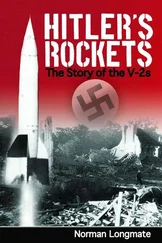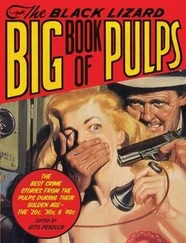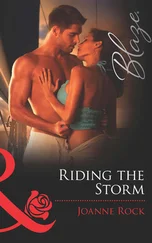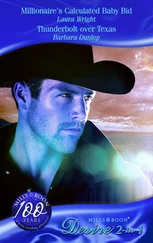Mike Mullane - Riding Rockets
Здесь есть возможность читать онлайн «Mike Mullane - Riding Rockets» весь текст электронной книги совершенно бесплатно (целиком полную версию без сокращений). В некоторых случаях можно слушать аудио, скачать через торрент в формате fb2 и присутствует краткое содержание. Жанр: Старинная литература, на английском языке. Описание произведения, (предисловие) а так же отзывы посетителей доступны на портале библиотеки ЛибКат.
- Название:Riding Rockets
- Автор:
- Жанр:
- Год:неизвестен
- ISBN:нет данных
- Рейтинг книги:3 / 5. Голосов: 2
-
Избранное:Добавить в избранное
- Отзывы:
-
Ваша оценка:
- 60
- 1
- 2
- 3
- 4
- 5
Riding Rockets: краткое содержание, описание и аннотация
Предлагаем к чтению аннотацию, описание, краткое содержание или предисловие (зависит от того, что написал сам автор книги «Riding Rockets»). Если вы не нашли необходимую информацию о книге — напишите в комментариях, мы постараемся отыскать её.
Riding Rockets — читать онлайн бесплатно полную книгу (весь текст) целиком
Ниже представлен текст книги, разбитый по страницам. Система сохранения места последней прочитанной страницы, позволяет с удобством читать онлайн бесплатно книгу «Riding Rockets», без необходимости каждый раз заново искать на чём Вы остановились. Поставьте закладку, и сможете в любой момент перейти на страницу, на которой закончили чтение.
Интервал:
Закладка:
But even as we TFNGs and the class of 1980 were doing our best to gain George’s favor we were also developing serious doubts about our leader. While he frequented our social functions, he rarely made appearances in the astronaut office. In particular he offered no insight into the one thing that mattered most to us, the shuttle flight assignment process. Initially, we believed that John Young would be making shuttle crew assignments. Since he bore the title chief of astronauts, how could it be otherwise? But the older astronauts were certain Abbey would be assigning crews independent of Young. In our rookie naïveté we found that hard to believe. Young was in a much better position to know our capabilities, limitations, and interpersonal compatibilities. Abbey’s office was in a separate building. How could he know what crew composition would be best for a particular mission? We could understand why Abbey wanted crew assignment authority, since it represented considerable power, but we could not understand why Young would have rolled over and allowed him to take it. While NASA’s management hierarchy did put Young under Abbey’s authority, it seemed to us Young could have easily insisted on having a big say in crew assignments without the slightest risk to his career. John was a living legend. He was a four-time veteran of spaceflights—two Gemini missions and two Apollo missions. He had walked on the moon. There was no way a midlevel bureaucrat like Abbey could have ever prevailed against him if Young had told Chris Kraft, “These are my astronauts. I know them. I want to have a hand in crew assignments. I’ll consider HQ’s inputs, your inputs, and Abbey’s inputs, but I want a significant say in the matter because I will have to bear the ultimate responsibility if there are any mistakes made by crews.” But the vets in the office were adamant in their opinion that Abbey was a rapacious power monger who had taken all flight assignment responsibility from Young. Why Young would have ever accepted such an office-neutering arrangement would remain a mystery throughout my astronaut life.
There were occasional hints that Abbey’s rule over astronauts was absolute, as when Jerry Ross (class of 1980) returned from Chris Kraft’s welcome for his class. Jerry told us he had been shocked when Kraft had implied he didn’t understand why their class had even been selected. He thought there were enough astronauts as it was. (As Jerry said, it was a strange way of welcoming them.) Jerry’s story implied Abbey had selected a new class over Kraft’s objections. Did even Dr. Kraft answer to Abbey on the subject of astronauts? Nobody knew. Kraft, Abbey, and Young never said a word about their responsibilities. Everything about the most important aspect of our career—flight assignments—was as unknown to us as the dark matter of space was to astrophysicists. Who made assignments? Who approved them? Who had veto power over them? Would there be a rotation system? Would our preferences for a mission be considered? Would military astronauts fly only military missions? Abbey said nothing. Nor did he ever provide the slightest performance feedback—positive or negative. If he had an agenda, that was never revealed either. I have never worked in any organization where there was such a complete lack of communication from above. The result of this information vacuum was predictable. FEAR. The line into space was long and nobody wanted to be at its end, or worse, be banished from it altogether. We were all terrified of doing something that might cross our king. We lived by rumor and innuendo because that was all there was. An early instance was a warning to Steve Nagel from Don Peterson (class of 1969) to stop work on a shuttle autopilot improvement project, “because rumor has it Abbey hates that project.” Nagel was stunned. He had been assigned the work by another office vet. It wasn’t something he had initiated. Yet he was being told he was jeopardizing his career by doing his assigned job. Shannon Lucid and I had a similar experience. Moon walker Al Bean directed us to prepare a report justifying why nonpilot MS astronauts should be trained as pilots. Later we heard from another office vet that Abbey was vehemently opposed to such a program. Shannon and I dropped the work as if it were radioactive waste. Everybody was constantly second-guessing their actions. It was a poisonous situation.
If John Young had been more involved in our professional lives, things might have been better, but he was also an absentee leader. He was consumed with training for STS-1. His interaction with the rank and file was mostly limited to the weekly one-hour Monday meetings, and at those he had an irritating and morale-eroding habit of publicly rebuking us when we failed to win battles on shuttle issues at the various NASA review panels. I recall one meeting in which Bill Fisher (class of 1980) leaned over to me and sarcastically whispered, “That’s it, John, yell at us. ” Fisher’s implication was obvious to all within earshot: John should have been at the panel meeting in question using his vast experience as a veteran spaceman to defend his position instead of expecting one of us rookies to carry the day.
Many TFNGs would grow to loathe the Abbey-Young duopoly and its black hole of communication.
In our second year at JSC we received our first real astronaut job assignments. Because we lacked any other information on the flight assignment process, we quickly constructed a belief system in which these early jobs portended our place in the line into space. To draw an “STS-1 Support” job was thought to be indicative of a position at the head of the TFNG line because of the overarching importance of that first shuttle flight. My name wasn’t under “STS-1 Support.” Next were jobs supporting STS-2, -3, and -4. Again, it was assumed TFNGs assigned to support those missions must be impressing Abbey and be in line for an early space mission. My name was absent from those assignments. And neither was my name typed next to jobs supporting spacewalk, robot arm, and payload development. I finally found “Mullane” next to “Spacelab Support.” This was at the rock bottom of TFNG job preferences. I felt as if I were back in high school after baseball tryouts seeing my name penciled next to B-squad backup right fielder.
Spacelab was a cylindrical module that would be installed in the cargo bay of a shuttle and connected to the cockpit by a pressurized tunnel. Since Spacelab flights would be science missions, I had assumed the post-docs would fly those missions. But it was my name on the jobs list next to “Spacelab Support,” not theirs. Over lunch in the cafeteria I got to listen to Pinky Nelson and Sally Ride and the others excitedly discuss their work of validating robot arm malfunction procedures, developing spacewalk procedures in the WETF swimming pool, and getting down and dirty with STS-1 issues. I averted my eyes, praying nobody would ask me about my days of listening to science briefings on upper-atmospheric gases and the Earth’s magnosphere. I was crushed. I now had the scent of Spacelab on me. I had to believe I was at the end of the flight assignment line, and, most maddening, I had no idea how I had gotten there or how I might recover. But, as I had done throughout my career, I resolved to set aside my disappointment and do my best at my new job. I also resolved to do a better job at getting my nose up George Abbey’s behind.
My disappointment at my Spacelab job was mitigated when, in late 1980, I was assigned to be part of the STS-1 “chase” team. When Columbia came streaking to a landing, NASA wanted a T-38 chase crew on her wing to warn Young and Crippen if anything looked amiss, if there was evidence of leaking fluids or fire or damaged flight controls or the landing gear didn’t extend properly. Thermal protection engineers also wanted the backseater in the chase aircraft to photograph Columbia ’s mosaic of ceramic belly heat tiles before she landed. There was some concern those tiles could be damaged by fragments of the Edwards AFB dry lakebed runway being hurled backward by the tires. Prelanding photos would enable engineers to determine whether a tile sustained damage during the mission or during landing. Several chase crews were formed and I was assigned to fellow TFNG Dave Walker’s backseat. During STS-1’s launch we were to be positioned at El Paso’s airport in case Columbia had a problem that necessitated an Abort Once Around the Earth (AOA) with a landing at the nearby White Sands Missile Range runway. If that happened we would scramble to do the rendezvous and I would take the photos.
Читать дальшеИнтервал:
Закладка:
Похожие книги на «Riding Rockets»
Представляем Вашему вниманию похожие книги на «Riding Rockets» списком для выбора. Мы отобрали схожую по названию и смыслу литературу в надежде предоставить читателям больше вариантов отыскать новые, интересные, ещё непрочитанные произведения.
Обсуждение, отзывы о книге «Riding Rockets» и просто собственные мнения читателей. Оставьте ваши комментарии, напишите, что Вы думаете о произведении, его смысле или главных героях. Укажите что конкретно понравилось, а что нет, и почему Вы так считаете.












